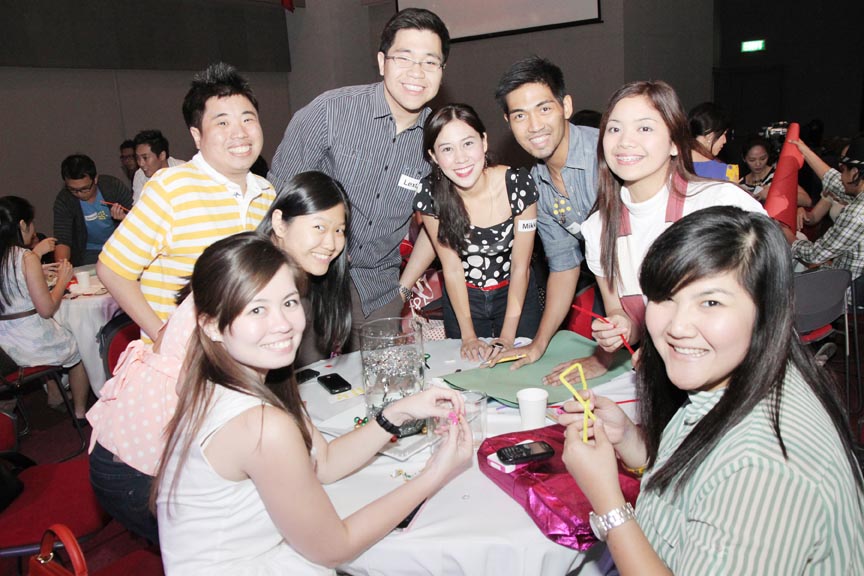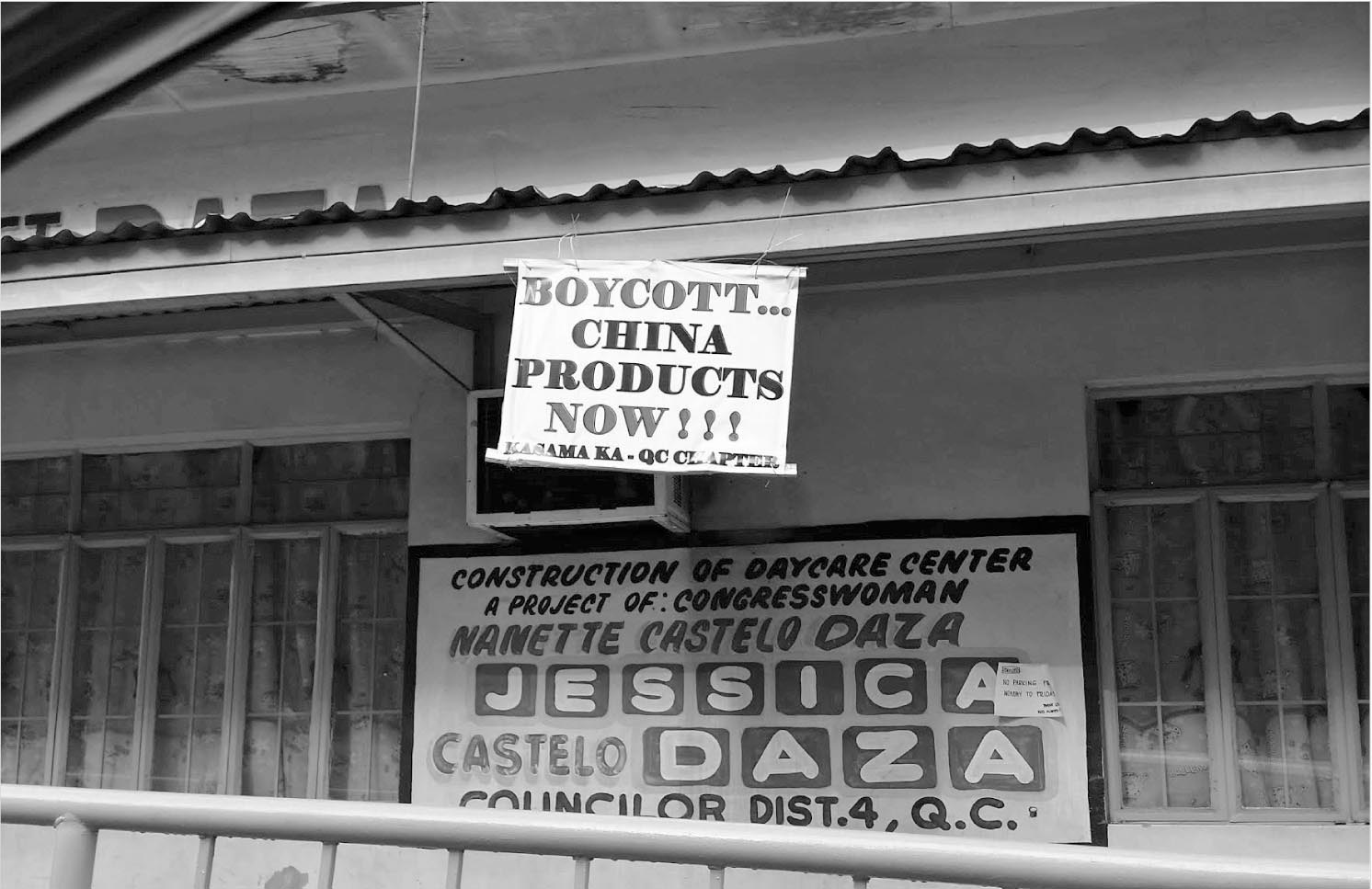My husband and I had a great laugh when we saw a series of signs – saying “Boycott China Products Now!!” – recently lining a street behind St. Luke’s Medical Center, Quezon City and ending at the barangay hall on Broadway corner E. Rodriguez Sr. Ave.
We immediately looked at the tags of the clothes we were wearing. He was wearing a Philippine-made shirt from Kentucky Shirts owned by a Tsinoy.
Hubby’s pants, underwear and socks were made in China. His shoes, Vietnam. My shirt-dress is made in Cambodia, slippers from Paete, Laguna, but my underwear and pants were from China. So I guess we will start boycotting products from China when we are all ready to walk nearly naked on the streets.
This is obviously in response to our country’s conflict with China on the West Philippine Sea. The response, though, is rash and apparently not the product of coherent, much less deep and serious, thought.
What is more scary are reactions borne out of sheer paranoia. In the newspapers and social media lately, there has been some pretty pretty racially-wired articles on June 7 and 21, 2015 of The Philippine Star from F. Sionil Jose, National Artist for Literature.
He is a respected writer and columnist. I cannot believe that he did not think carefully about what he wrote. Just because his thoughts are not what many Tsinoys nor I agree with does not mean they were not put together with great attention.
The main gist of the two articles from Jose is that Chinese Filipinos are mostly loyal to China and would side with China if the conflict on the West Philippine Sea escalates.
In his first article, Jose used the term ethnic Chinese often. Only twice did the term “Chinese Filipinos” appear:
• “And yet, some Chinese Filipinos say that, indeed, the whole of the Spratlys belong to China.”
• “I have several ethnic Chinese friends, among them the Yuyitungs, who migrated to Canada. But at the same time, I have insisted that the loyalty of Chinese Filipinos should be to their native culture, not to the Chinese state.”
I cannot even imagine where he got the first statement from. Maybe Jose got it from a friend and simply assumed it was a common sentiment.
Jumping to hasty generalizations is one of the seven literary sins, says Kyoto University Professor, Center for Southeast Asian Studies, Caroline Hau in her blog.
One discrepancy in the second statement is when Jose pointed out “native culture.” What is the native culture anyway? As far as Tsinoys know, our culture is steeped in the traditions our grandparents brought from China AND the Philippine culture in which we are born and with which we grew up. We cannot be one without the other.

Clinton Palanca, in a letter to Jose last June 24 on Spot.ph said: “Shame on us as a nation if we asked each other to give up their cultural identity, whether it be Kankanay or Ilonggo or Chinese, in order to be more Filipino.”
When Jose was called a racist and a bigot, he brushed these off in a second article as “senseless name-calling.”
Toward the end of his second piece, Jose tells Chinese Filipinos to prove him wrong and asked, “In a war with China, will you side with us? If you say you are with us… then go shout it out from the rooftops!”
A number of Tsinoys responded to him: Hau and writer Yvette Chua in their personal blogs, Palanca in Spot.ph, journalist Melanie Lim in Sun.Star Cebu.
As well, there are two pieces from columnist and lawyer Oscar Franklin Tan in Philippine Daily Inquirer and, also in PDI, Carmela Lao, summa cum laude graduate, class of 2015, from Massachusetts Institute of Technology.
What was heartwarming is a broad-minded article from journalist Boying Pimentel in PDI.
Meanwhile, a friend of Kaisa Para Sa Kaunlaran was miffed that Kaisa did not issue an official statement against Jose and the current bashing against against U.P. summa cum laude graduate Tiffany Uy.
My response: “Did we have to?”
In a June 18, 2015 article for When in Manila online, Rebecca Lee debunks seven myths about Tsinoys. She quoted Kaisa president Angela Yu and U.P. chancellor Dr. Michael Tan, and summarized a lecture from Kaisa founding president Teresita Ang See.
Lee debunked misconceptions that Tsinoys are excessively studious and naturally good in Math; we wear outlandish traditional garb; Intsik is simply Chinese; there is a divide between Filipinos and Chinese the size of the Great Wall of China; Philippine matters do not concern Tsinoys; the difference between using Filipino-Chinese and Chinese Filipino; and most importantly, that Tsinoys are not Filipinos. All these debunked myths simply show that Tsinoys are not apart from Filipinos.
Lao’s July 1, 2015 article about the Uy bashing echoes Tsinoy sentiments to the core. Her first sentence is something most of us have encountered in one form or the other, “Ay, Chinese pala. Nasaan na ang mga tunay na Pilipino?”
Lao adds, “More dangerously, while these comments are tinged with the color of racism against Chinese Filipinos, they are fundamentally stark manifestations of crab mentality, of a mindset where, instead of celebrating achievement, we denigrate it and promote mediocrity. This cancer plaguing Philippine society can potentially evolve, manifesting itself as discrimination against other ethnic groups, religious minorities, or even by geographical borders. And undeniably, this cancer is already among us.”
Her words are professional, heartfelt, coming from primary experience and filtered with an understanding of the world. There is no anger against bashers, but there is sadness in what our society has become.
In the past few weeks, we have seen a myriad of responses on traditional print media and social media responding to Jose and the Uy bashing.
Some concur with Jose, others speak up on behalf of Tsinoys. It is inspiring to see people from all walks of life, of all ages, speaking from understanding, open-mindedness and acceptance.
Kaisa has been working toward this for more than 40 years. We cannot claim that we are the sole reason for this shift in thinking, but I believe our work for the past decades has made headway. Just look at how the mainstream media and general public now use the word Tsinoy or Chinoy.
Tsinoy was promoted by Kaisa Para Sa Kaunlaran in 1992 precisely to have a Filipino term for Chinese Filipino in the same way as there are peranakans in Indonesia and babas in Malaysia.
I am personally very happy with how other people are taking the cudgels in our defense.
In different media interviews for Bahay Tsinoy, reporters ask me about the West Philippine Sea loyalty issue on the side, and then recently on Jose’s article.
I often gave a tongue-in-cheek answer to the loyalty question: “Bakit kami tinatanong? Bakit yung cameraman nyo, hindi mo tanungin?”
People implicitly assume that the Malay Filipino will automatically side with his own country, the Philippines. But this assumption is not applied to Chinese Filipinos, as if there were no Filipino in the name we call ourselves.
Tan writes it better than I ever can in his June 29, 2015 PDI article.
He says to replace the term “Chinese Filipinos” with something else, such as “If you are male and not a chauvinist pig, then go shout it from the rooftops!” or “If you are Muslim and not a terrorist, then go shout it from the rooftops!”
On another aspect of this issue, why do we even have to identify ourselves as Tsinoys? So that our loyalties are never again questioned, can we just say, “Filipino ako” period?
My answer to that: Yes, if we choose to. There is nothing to stop anyone from identifying himself as one or the other. For example, a friend recounted about his friend who migrated to America, and became totally American after a few months, including adopting an uninformed and misplaced racial hatred toward Mexicans.
I would personally never refer to myself as just Filipino. Even when abroad, I call myself Chinese Filipino.
This is my small way of showing respect to my grandparents who suffered through hard times, hunger and war so my children and I could have the lives we now live.
This is my small way of showing how much I celebrate my Filipino-ness, because only in the Philippines would my grandparents have been successful. They were accepted and nurtured here so that we could now proudly be truly Filipino.
This is what I want to shout from the rooftops. — First published in Tulay Fortnightly, Chinese-Filipino Digest 28, no. 3 (July 7-20, 2015): 8-9.
